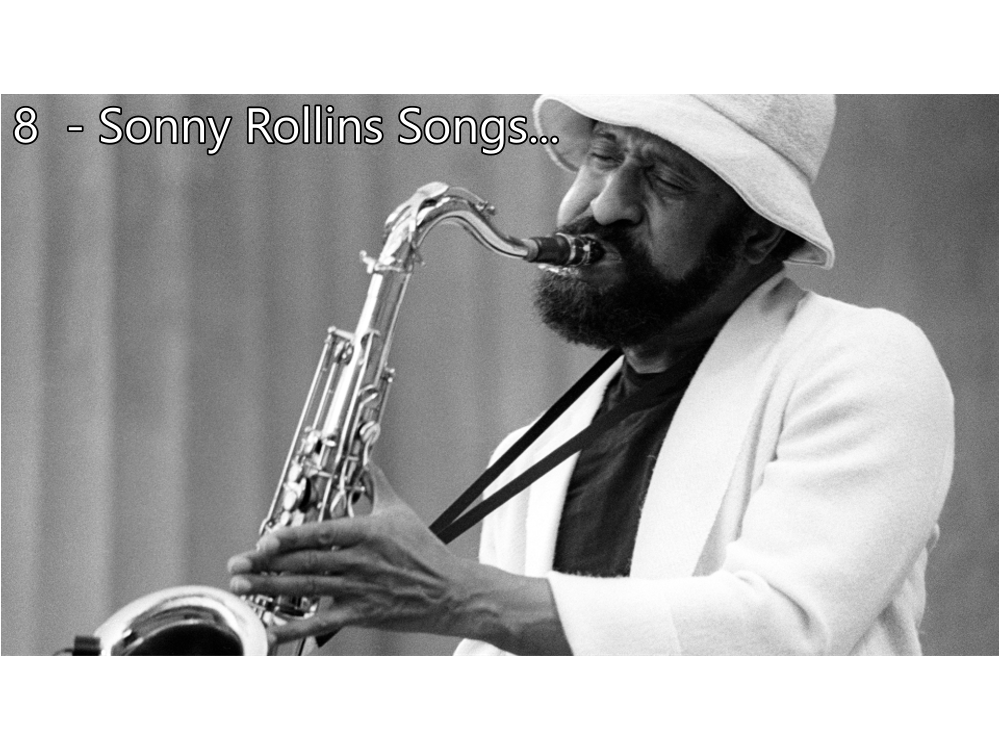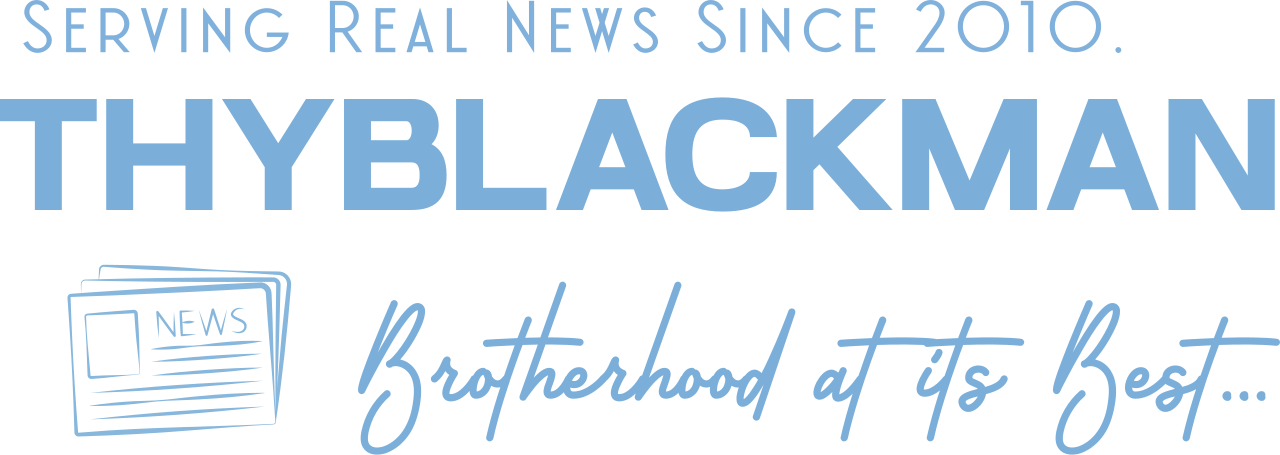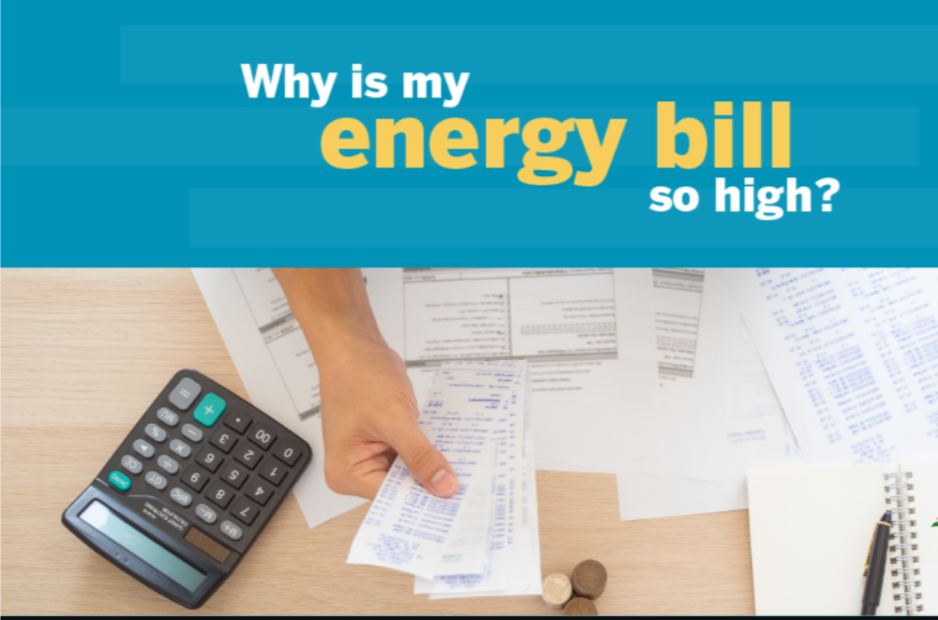(ThyBlackMan.com) You never really hear Sonny Rollins for the first time—you feel him. Maybe it’s in the way his saxophone dances like it’s got something to say, or maybe it’s that unmistakable tone—bold as brass, but warm as an old friend’s voice. For me, it started with “Doxy” one summer night, tucked away in the corner of a downtown jazz bar. One chorus in, and I wasn’t just listening anymore—I was in it.
That’s the magic of Rollins. He doesn’t just play notes—he tells stories. Sometimes with fire, sometimes with a smile, always with purpose. He’s the kind of player who can make you tap your foot one second and question the meaning of life the next. And somehow, it always swings.
If you’ve ever wondered where to start—or restart—with Sonny Rollins, these eight tracks are a soulful way in. They cover the range: fiery bebop, melodic ballads, deep political statements, and outer-space experimentation. Each one opens a door into the mind of a man who never stopped growing, never stopped searching.

1. “St. Thomas”
Arguably Rollins’ most iconic piece, “St. Thomas” is a Caribbean-tinged jazz standard that first appeared on his seminal album Saxophone Colossus. The song is inspired by a Virgin Islands nursery rhyme that Rollins’ mother used to sing to him. From the very first note, the piece is a joyful explosion of rhythm, blending calypso grooves with bebop fluidity. It’s as much a celebration of heritage as it is a demonstration of Rollins’ remarkable ability to bridge diverse musical traditions.
The tune’s infectious melody makes it immediately accessible, even to non-jazz listeners. Yet, underneath the seemingly lighthearted surface lies a deep sense of musical sophistication. Rollins’ improvisation is a lesson in thematic development; he takes the central motif and expands on it with brilliant variations that never feel forced. His tone is warm and playful, matching the song’s sunny disposition. What really stands out is the seamless way Rollins transitions from structure to freedom, never losing the tune’s breezy spirit.
The trio format—without a piano—gives the tune extra air to breathe. This sparse setting forces Rollins to be more inventive rhythmically and harmonically. He takes full advantage, using the openness to explore phrasing and space, which gives the track a live, almost spontaneous energy. Drummer Max Roach and bassist Tommy Potter lay down a swaying rhythmic foundation that captures the island feel without ever becoming cliché or predictable.
Today, “St. Thomas” continues to serve as a bridge between jazz and global rhythms, proving that jazz is a universal language. For younger musicians exploring world music fusion, this track is a perfect example of how to honor one’s cultural roots while pushing artistic boundaries. Whether you’re lounging on a summer day or hosting a relaxed dinner party, “St. Thomas” adds joy to any playlist—and reminds us that jazz can be both serious art and irresistible fun.
2. “Oleo”
Written by Rollins and first recorded with Miles Davis’ quintet, “Oleo” is a fast-paced, hard bop burner built over the chord changes of George Gershwin’s “I Got Rhythm.” The track exemplifies Rollins’ ingenuity in crafting melodies that are as intellectually rigorous as they are catchy. It’s a brief head—simple, punchy, and immediately memorable—but it functions as the fuse for explosive improvisation.
The beauty of “Oleo” lies in its relentless energy. Rollins’ solo is a dazzling display of bebop language—arpeggios, chromatic runs, rhythmic displacements—all executed with an ease that belies their difficulty. The synergy between Rollins and Davis on this track is electric; they push each other to greater heights, engaging in a kind of musical conversation that still crackles with excitement decades later. Every chorus builds with increasing complexity, yet the structure remains intact, never veering into chaos.
“Oleo” is also notable for the way it encapsulates Rollins’ humor and spontaneity. You can hear him playing with the rhythm, delaying phrases just long enough to surprise the listener before snapping them back into time. He’s like a jazz tightrope walker, performing flips and twists but never falling off the beat. This lighthearted virtuosity is part of what gives “Oleo” its lasting charm—sophisticated but never self-serious.
In contemporary settings, “Oleo” is often used as a test piece for jazz students. It demands technical proficiency and a deep understanding of form. Yet, even casual listeners can appreciate the sense of movement and thrill that the tune evokes. It’s an exhilarating ride that keeps your foot tapping from start to finish and proves that Rollins, even early in his career, had already mastered the art of melodic improvisation.
3. “Doxy”
“Doxy” is another standard penned by Rollins that has become a rite of passage for jazz players. Like “Oleo,” it was recorded with Miles Davis and features a relaxed, swinging groove that contrasts with its more frenetic cousin. The melody is catchy and simple, but Rollins uses that simplicity as a launchpad for complex improvisation. It’s a perfect example of his philosophy: take a strong, memorable tune and explore every angle of its musical DNA.
The tune’s laid-back charm makes it timeless. Rollins’ phrasing on the original recording is unhurried but deeply expressive. Each note feels considered, and his ability to leave space between phrases shows a mature sense of pacing. The arrangement features a walking bass and crisp drumming that provide a perfect cushion for his melodic flights. Red Garland’s piano comping is tastefully restrained, giving Rollins plenty of room to breathe.
What elevates “Doxy” is its balance of ease and depth. Rollins doesn’t overpower the melody—he converses with it. His improvisation bends but never breaks the tune’s playful character. He nudges notes off the beat, tugs on rhythms, and stretches harmonies without losing the song’s essential warmth. There’s a sense of swing that feels unforced, a kind of musical smile that’s hard to resist.
“Doxy” is often heard in jazz clubs and jam sessions to this day, not just because it’s easy to learn, but because it remains emotionally satisfying to play and to hear. It’s the kind of tune that makes you feel like you’re in a smoky club in the 1950s, sipping a drink and soaking in the vibes. For contemporary listeners, it offers a glimpse into the golden age of jazz without feeling dated. It’s nostalgic, but never dusty.
4. “Freedom Suite”
A landmark composition in Rollins’ career, “Freedom Suite” spans over 19 minutes and represents one of his first overt political statements. Released during the civil rights era, the piece was a bold move for a jazz artist, and it foreshadowed the rise of socially conscious music in the 1960s and beyond. Rollins didn’t just want to entertain—he wanted to provoke thought and reflect the turbulent times in which he lived.
Musically, “Freedom Suite” is ambitious. It moves through various moods and motifs, from meditative to explosive, showcasing Rollins’ compositional skills as well as his improvisational prowess. The suite’s trio format—saxophone, bass, and drums—creates a raw, open sound that allows each player significant expressive freedom. Max Roach on drums and Oscar Pettiford on bass are essential collaborators here. Their interplay is conversational, creating tension and release in a way that mirrors the emotional gravity of the piece.
Rollins’ soloing on “Freedom Suite” is fiery and uncompromising. He moves between structured melodies and abstract expression, challenging the listener to stay engaged. There’s an urgency in his tone, as if each note carries weight beyond the music itself. At times, the suite feels almost symphonic in its scope, even though it’s delivered by just three instruments. It’s a testament to the power of minimalism when guided by maximum conviction.
Today, “Freedom Suite” resonates strongly in a world still grappling with racial injustice and inequality. It’s a reminder that jazz has always been more than entertainment—it’s also a vehicle for protest and introspection. Listening to it in 2025, one is struck not only by its musical daring but also by its courage and relevance. Rollins didn’t need lyrics to make a statement; his horn said everything.
5. “Airegin”
Pronounced “Nigeria” spelled backward, “Airegin” is a musically daring composition that showcases Sonny Rollins’ deep engagement with African heritage, rhythm, and bebop complexity. Composed during his early collaborations with Miles Davis, the tune made its debut with Davis’ quintet on the Bags’ Groove sessions. Unlike the smoother standards of the day, “Airegin” arrives fast and angular, driven by a melodic line that darts and weaves with restless energy.
The piece is notable for its structure, which resists easy categorization. Rollins builds a theme full of syncopations and intervallic jumps that defy the typical singable jazz head. But that’s the point—“Airegin” is meant to be a challenge. His improvisation is dense but never cluttered; every note seems to leap off the page, full of urgency and control. There’s a youthful boldness in his phrasing, as though he’s declaring his arrival not just as a player, but as a composer with a unique voice.
What’s particularly powerful is the cultural context of the title. At a time when few jazz musicians were openly addressing Black identity through naming or thematic cues, Rollins created a piece that implicitly nodded to the motherland. “Airegin” became part of a growing movement in jazz that placed African roots and diasporic awareness front and center—a precursor to the more overt Pan-African jazz of the 1960s.
In 2025, “Airegin” remains a rite of passage for serious jazz players. It continues to show up in conservatory practice rooms and jam sessions, not only because of its technical demands but also because of its musical richness. For casual listeners, it offers a glimpse into bebop at its most adventurous. For scholars and artists, it’s a reminder of how jazz has always been capable of engaging with global identity, even when spoken through the virtuosic language of post-war American music.
6. “The Bridge”
After a three-year hiatus from the jazz spotlight, Sonny Rollins returned with The Bridge, and its title track remains one of the most revered recordings in his discography. Practicing for months on the Williamsburg Bridge in New York City, Rollins used his time away from the public to refine not just his technique, but his entire approach to music. When he emerged, he wasn’t just returning to jazz—he was reshaping it.
“The Bridge” is cool, cerebral, and profoundly melodic. Unlike the fierce, hard bop Rollins had mastered in the 1950s, this tune leans into space and subtlety. With Jim Hall on guitar, the song trades the dense harmonic comping of piano for harmonic openness, allowing Rollins more room to explore the architecture of each phrase. His saxophone lines on this track don’t erupt—they unfold, revealing a reflective and almost philosophical mood.
What makes “The Bridge” so compelling is its maturity. Rollins doesn’t feel the need to show off. He plays with intention, exploring motifs, echoing previous lines, and evolving musical ideas gradually. The track is harmonically rich but emotionally restrained. It avoids the easy climax, opting instead for a kind of musical slow burn that invites repeated listening.
In our age of instant gratification, “The Bridge” teaches the value of patience and nuance. It’s perfect for reflective moments—late nights, long walks, or solitary drives. More than a song, it feels like a journal entry from a man who took time to confront himself and returned with new wisdom. For younger artists today seeking longevity rather than viral stardom, “The Bridge” is a masterclass in artistic integrity and growth.
7. “Alfie’s Theme”
Composed for the 1966 film Alfie, starring Michael Caine, “Alfie’s Theme” represents one of Rollins’ most successful forays into film scoring—and also one of his most listener-friendly compositions. It is lyrical, expressive, and instantly memorable, with a singable melody that captures both the charm and inner contradictions of the movie’s title character. Rollins wasn’t just writing background music—he was giving Alfie a voice.
Though the track was part of a cinematic project, it doesn’t feel like mere soundtrack filler. Rollins plays with passion and personality, treating each phrase like a line of dialogue. His tenor saxophone dances, swings, and sighs, reflecting the highs and lows of Alfie’s character. There’s an effortless elegance to the tune that showcases Rollins’ melodic sensibility—one that isn’t always highlighted in his more angular or experimental work.
The version that appears on the Alfie soundtrack is bolstered by orchestration, but what stands out is how well Rollins’ soloing still dominates the emotional narrative. His improvisations never wander; they are tightly wound around the film’s thematic concerns: loneliness, ego, and vulnerability. It’s this emotional intelligence, combined with technical prowess, that elevates “Alfie’s Theme” beyond the realm of film jazz.
For today’s audiences, “Alfie’s Theme” offers a beautiful intersection of accessibility and depth. It’s a gateway into Rollins’ world for listeners who might not yet be ready for his more avant-garde work. And for modern composers and scorewriters, it remains a benchmark—proof that jazz can be cinematic without losing its improvisational soul.
8. “East Broadway Run Down”
At over 20 minutes long, “East Broadway Run Down” is not for the faint of heart. It’s an explosion of free jazz expression that sees Sonny Rollins pushing the limits of his instrument and his genre. Joined by Elvin Jones on drums and Jimmy Garrison on bass—two-thirds of John Coltrane’s legendary rhythm section—Rollins plunges headfirst into musical abstraction. But unlike some free jazz that opts for total chaos, this piece is built on a primal pulse that keeps things grounded, even when they’re at their most turbulent.
The track begins with a deceptively simple motif that serves as the anchor. From there, Rollins embarks on an improvisational odyssey. He shrieks, growls, repeats phrases into oblivion, and bends notes as if the saxophone were made of molten brass. Yet amid the wildness, there’s intent. Rollins isn’t just making noise—he’s excavating something deeper. The interplay between saxophone, bass, and drums is fierce but communicative, full of tension and release.
“East Broadway Run Down” was Rollins’ answer to the changing jazz landscape. Coltrane was diving into the spiritual avant-garde. Ornette Coleman had broken the mold entirely. Rather than follow, Rollins engaged in his own radical dialogue with free jazz, on his own terms. The result is a track that challenges the listener to unlearn conventional musical structures and experience jazz as raw energy, emotion, and instinct.
In 2025, “East Broadway Run Down” feels strangely contemporary. It mirrors the complexity of our current world—unpredictable, sometimes dissonant, but deeply human. Listeners who appreciate boundary-pushing work from modern jazz artists like Matana Roberts or crossover experimentalists like Flying Lotus will find kinship here. It is Rollins at his boldest: uncompromising, unfiltered, and unstoppable.
Spending time with Sonny Rollins’ music is like sitting in on a jam session where truth is being played out in real time. No gimmicks, no filters—just breath, brass, and bare emotion. He could go toe-to-toe with Coltrane, charm an audience with calypso, or tear down the rules of harmony if it meant saying something real.
These eight tunes? They’re not just jazz standards. They’re milestones. Snapshots of a life in motion, constantly evolving but always grounded in soul. And the best part? They still speak to us today—whether you’re a lifelong jazz head or someone discovering this magic for the very first time.
So light a candle, pour something strong, and let Sonny take you for a ride. Because once you’ve heard him really blow, it’s like catching lightning in a bottle. And trust me, you’ll be chasing that sound for the rest of your life—in all the right ways.
Staff Writer; Jamar Jackson

















You forget “Blue Seven”!